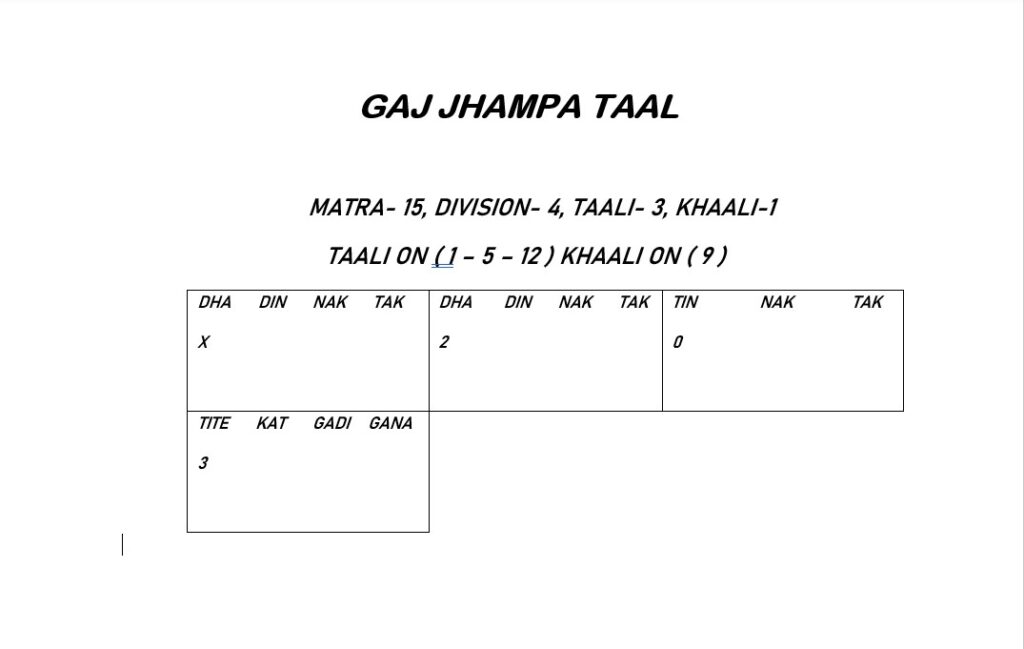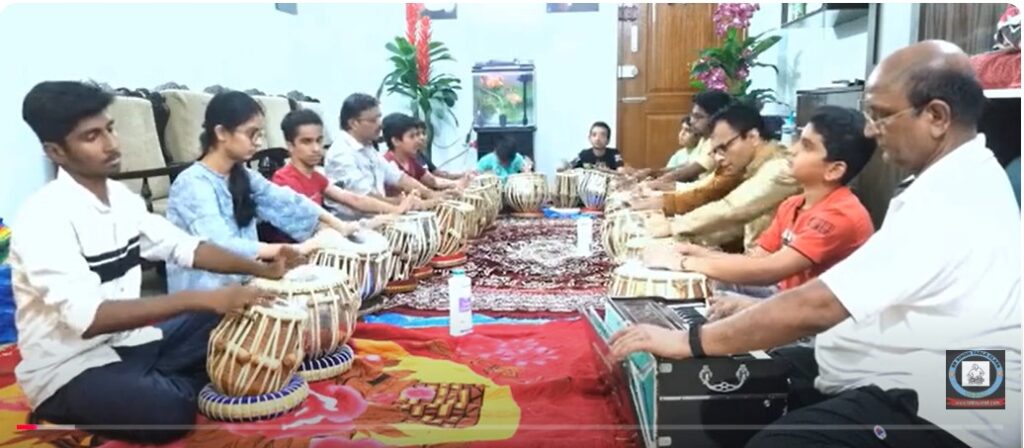Gaj Jhampa Taal is a 15-beat rhythmic cycle in Indian classical music with 4 divisions. It features 3 taalis (on the 1st, 5th, and 12th beats) and 1 khaali (on the 9th beat), creating a unique rhythmic pattern.Gaj Jhampa Taal is a 15-beat rhythmic cycle in Indian classical music with 4 divisions. It features 3 taalis (on the 1st, 5th, and 12th beats) and 1 khaali (on the 9th beat), creating a unique rhythmic pattern.Gaj Jhampa Taal is a 15-beat rhythmic cycle in Indian classical music with 4 divisions. It features 3 taalis (on the 1st, 5th, and 12th beats) and 1 khaali (on the 9th beat), creating a unique rhythmic pattern.
Introducing the

Gajajhampa Taal is a 15-beat rhythmic cycle (taal) used in Indian classical music. It has a distinctive structure that sets it apart from other taals due to its unique combination of divisions (vibhags), taalis (claps), and khaalis (empty beats or waves). Here’s a more detailed explanation:
- Matra (Beats): 15 beats in total.
- Vibhags (Divisions): It is divided into 4 sections or vibhags. These divisions help in breaking down the complexity of the taal and make it easier to understand and perform.
- Taali (Clap): Gajajhampa Taal has 3 taalis (strong beats where a clap is emphasized) on the 1st, 5th, and 12th beats.
- Khaali (Empty Beat): The khaali is placed on the 9th beat, where instead of clapping, the performer gestures with an open hand, indicating a lighter or softer beat.
The structure can be represented as follows:
- Dha – Clap (1st beat)
- Dhin
- Dha
- Ta
- Ta – Clap (5th beat)
- Dhin
- Dha
- Ge
- Na – Wave (9th beat or khaali)
- Ti
- Dha
- Dhin – Clap (12th beat)
- Dha
- Ge
- Na
This combination of taali and khaali provides Gajajhampa Taal its distinctive rhythm and feel. The taal is used in specific compositions of classical music, and performers must maintain precise timing to reflect its complexity.
https://www.youtube.com/@BhagawanSingh
https://en.wikipedia.org/wiki/New_Halfa


